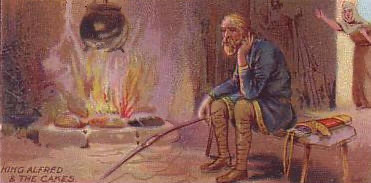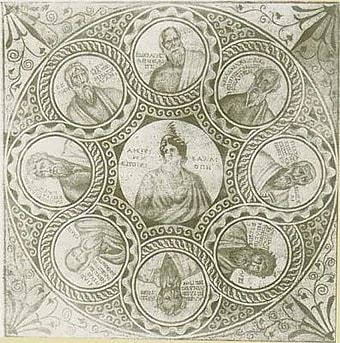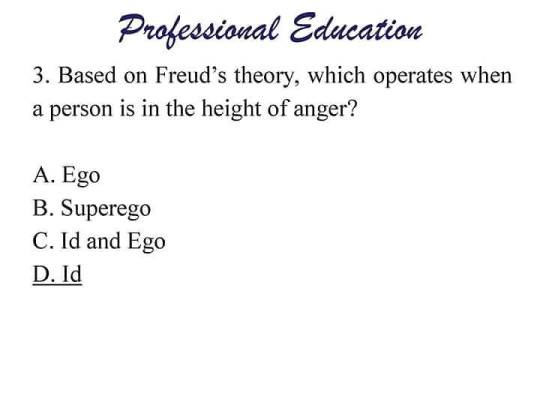Text

HOUSE OF SAXE-COBURG AND GOTHA
EDWARD VII 1901 – 1910
A much loved king, the opposite of his dour father. He loved horse-racing, gambling and women! This Edwardian Age was one of elegance. Edward had all the social graces and many sporting interests, yachting and horse-racing – his horse Minoru won the Derby in 1909. Edward married the beautiful Alexandra of Denmark in 1863 and they had six children. The eldest, Edward Duke of Clarence, died in 1892 just before he was to marry Princess Mary of Teck. When Edward died in 1910 it is said that Queen Alexandra brought his current mistress Mrs. Keppel to his bedside to take her farewell. His best known mistress was Lillie Langtry, the ‘Jersey Lily’.
HOUSE OF WINDSOR
Name changed in 1917
GEORGE V 1910 – 1936
George had not expected to be king, but when his elder brother died he became the heir-apparent. He had joined the Navy as a cadet in 1877 and loved the sea. He was a bluff, hearty man with a ‘quarter-deck’ manner. In 1893 he married Princess Mary of Teck, his dead brother’s fiancee. His years on the throne were difficult; the First World War in 1914 – 1918 and the troubles in Ireland which lead to the creation of the Irish Free State were considerable problems. In 1932 he began the royal broadcasts on Christmas Day and in 1935 he celebrated his Silver Jubilee. His latter years were overshadowed by his concern about the Prince of Wales and his infatuation with Mrs. Simpson.
EDWARD VIII June 1936 – abdicated December 1936
Edward was the most popular Prince of Wales Britain has ever had. Consequently when he renounced the throne to marry Mrs. Wallis Simpson the country found it almost impossible to believe. The people as a whole knew nothing about Mrs. Simpson until early in December 1936. Mrs. Simpson was an American, a divorcee and had two husbands still living. This was unacceptable to the Church, as Edward had stated that he wanted her to be crowned with him at the Coronation which was to take place the following May. Edward abdicated in favour of his brother and took the title, Duke of Windsor. He went to live abroad.
GEORGE VI 1936 – 1952
George was a shy and nervous man with a very bad stutter, the exact opposite of his brother the Duke of Windsor, but he had inherited the steady virtues of his father George V. He was very popular and well loved by the British people. The prestige of the throne was low when he became king, but his wife Elizabeth and his mother Queen Mary were outstanding in their support of him.
The Second World War started in 1939 and throughout the King and Queen set an example of courage and fortitude. They remained at Buckingham Palace for the duration of the war in spite of the bombing. The Palace was bombed more than once. The two Princesses, Elizabeth and Margaret, spent the war years at Windsor Castle. George was in close touch with the Prime Minister, Winston Churchill throughout the war and both had to be dissuaded from landing with the troops in Normandy on D-Day! The post-war years of his reign were ones of great social change and saw the start of the National Health Service. The whole country flocked to the Festival of Britain held in London in 1951, 100 years after the Great Exhibition during Victoria’s reign.
ELIZABETH II 1952 –
Elizabeth Alexandra Mary, or ‘Lilibet’ to close family, was born in London on 21 April 1926. Like her parents, Elizabeth was heavily involved in the war effort during the Second World War, serving in the women’s branch of the British Army known as the Auxiliary Territorial Service, training as a driver and mechanic. Elizabeth and her sister Margaret anonymously joined the crowded streets of London on VE Day to celebrate the end of the war. She married her cousin Prince Philip, Duke of Edinburgh, and they had four children: Charles, Anne, Andrew and Edward. When her father George VI died, Elizabeth became Queen of seven Commonwealth countries: the United Kingdom, Canada, Australia, New Zealand, South Africa, Pakistan, and Ceylon (now known as Sri Lanka). Elizabeth’s coronation in 1953 was the first to be televised, serving to increase popularity in the medium and doubling television licence numbers in the UK. The huge popularity of the royal wedding in 2011 between the Queen’s grandson, Prince William and the commoner Kate Middleton, now the Duke and Duchess of Cambridge, reflected the high profile of the British Monarchy at home and abroad. 2012 was also an important year for the royal family, as the nation celebrated the Queen’s Diamond Jubilee, her 60th year as Queen.
On 9th September 2015, Elizabeth became Britain’s longest serving monarch, ruling longer than her great-great grandmother Queen Victoria who reigned for 63 years and 216 days. Congratulations Ma’am; God Save the Queen!
Gawcams Media
#Gawcams
#uK
0 notes
Text

English Kings
SAXON KINGS
EGBERT 827 – 839
Egbert (Ecgherht) was the first monarch to establish a stable and extensive rule over all of Anglo-Saxon England. After returning from exile at the court of Charlemagne in 802, he regained his kingdom of Wessex. Following his conquest of Mercia in 827, he controlled all of England south of the Humber. After further victories in Northumberland and North Wales, he is recognised by the title Bretwalda (Anglo-Saxon, “ruler of the British”). A year before he died aged almost 70, he defeated a combined force of Danes and Cornish at Hingston Down in Cornwall. He is buried at Winchester in Hampshire.
AETHELWULF 839-858
King of Wessex, son of Egbert and father of Alfred the Great. In 851 Aethelwulf defeated a Danish army at the battle of Oakley while his eldest son Aethelstan fought and defeated a Viking fleet off the coast of Kent, in what is believed to be “the first naval battle in recorded English history”. A highly religious man, Athelwulf travelled to Rome with his son Alfred to see the Pope in 855
AETHELBALD 858 – 860
The second son of Aethelwulf, Æthelbald was born around 834. He was crowned at Kingston-upon-Thames in southwest London, after forcing his father to abdicate upon his return from pilgrimage to Rome. Following his father’s death in 858, he married his widowed stepmother Judith, but under pressure from the church the marriage was annulled after only a year. He is buried at Sherbourne Abbey in Dorset.
AETHELBERT 860 – 866
Became king following the death of his brother Æthelbald. Like his brother and his father, Aethelbert (pictured to the right) was crowned at Kingston-upon-Thames. Shortly after his succession a Danish army landed and sacked Winchester before being defeated by the Saxons. In 865 the Viking Great Heathen Army landed in East Anglia and swept across England. He is buried at Sherborne Abbey.
AETHELRED I 866 – 871
Aethelred succeeded his brother Aethelbert. His reign was one long struggle with the Danes who had occupied York in 866, establishing the Viking kingdom of Yorvik. When the Danish Army moved south Wessex itself was threatened, and so together with his brother Alfred, they fought several battles with the Vikings at Reading, Ashdown and Basing. Aethelred suffered serious injuries during the next major battle at Meretun in Hampshire; he died of his wounds shortly after at Witchampton in Dorset, where he was buried.
ALFRED THE GREAT 871 – 899 – son of AETHELWULF
Born at Wantage in Berkshire around 849, Alfred was well educated and is said to have visited Rome on two occasions. He had proven himself to be a strong leader in many battles, and as a wise ruler managed to secure five uneasy years of peace with the Danes, before they attacked Wessex again in 877. Alfred was forced to retreat to a small island in the Somerset Levels and it was from here that he masterminded his comeback, perhaps ‘burning the cakes‘ as a consequence. With major victories at Edington, Rochester and London, Alfred established Saxon Christian rule over first Wessex, and then on to most of England. To secure his hard won boundaries Alfred founded a permanent army and an embryonic Royal Navy. To secure his place in history, he began the Anglo-Saxon Chronicles.
EDWARD (The Elder) 899 – 924
Succeeded his father Alfred the Great. Edward retook southeast England and the Midlands from the Danes. Following the death of his sister Aethelflaed of Mercia, Edward unites the kingdoms of Wessex and Mercia. In 923, the Anglo-Saxon Chronicles record that the Scottish King Constantine II recognises Edward as “father and lord”. The following year, Edward is killed in a battle against the Welsh near Chester. His body is returned to Winchester for burial.
ATHELSTAN 924 – 939
Son of Edward the Elder, Athelstan extended the boundaries of his kingdom at the Battle of Brunanburh in 937. In what is said to be one of the bloodiest battles ever fought on British soil, Athelstan defeated a combined army of Scots, Celts, Danes and Vikings, claiming the title of King of all Britain. The battle saw for the first time individual Anglo-Saxon kingdoms being brought together to create a single and unified England. Athelstan is buried in Malmesbury, Wiltshire.
EDMUND 939 – 946
Succeeded his half-bother Athelastan as king at the tender age of 18, having already fought alongside him at the Batlle of Brunanburh two years earlier. He re-established Anglo-Saxon control over northern England, which had fallen back under Scandinavian rule following the death of Athelstan. Aged just 25, and whilst celebrating the feast of Augustine, Edmund was stabbed by a robber in his royal hall at Pucklechurch near Bath. His two sons, Eadwig and Edgar, were perhaps considered too young to become kings.
EADRED 946 – 955The son of Edward the Elder by his third marriage to Eadgifu, Eadred succeeded his brother Edmund following his premature death. He followed in the family tradition of defeating Norsemen, expelling the last Scandinavian King of York, Eric Bloodaxe, in 954. A deeply religious man, Eadred suffered a serious stomach ailment that would eventually prove fatal. Eadred died in his early 30s, unmarried and without an heir, at Frome in Somerset. He is buried in Winchester.
EADWIG 955 – 959The eldest son of Edmund I, Eadwig was about 16 when he was crowned king at Kingston-upon-Thames in southeast London. Legend has it that his coronation had to be delayed to allow Bishop Dunstan to prise Eadwig from his bed, and from between the arms of his “strumpet” and the strumpets’ mother. Perhaps unimpressed by the interruption, Eadwig had Dunstan exiled to France. Eadwig died in Gloucester when he was just 20, the circumstances of his death are not recorded.
EDGAR 959 – 975The youngest son of Edmund I, Edgar had been in dispute with his brother concerning succession to the throne for some years. Following Eadwig’s mysterious death, Edgar immediately recalled Dunstan from exile, making him Archbishop of Canterbury as well as his personal adviser. Following his carefully planned (by Dunstan) coronation in Bath in 973, Edgar marched his army to Chester, to be met by six kings of Britain. The kings, including the King of Scots, King of Strathclyde and various princes of Wales, are said to have signalled their allegiance to Edgar by rowing him in his state barge across the River Dee.
#GawcamsMedia
Gawcams.blogspot.com
4 notes
·
View notes
Photo

Typhoon "#TisoyPH" slightly weakens while moving onshore and is now over Pilar, Sorsogon. https://t.co/Q8qwPeKBDm #gawcams https://www.instagram.com/p/B5mncCnJZbW/?igshid=1fzebs94dbp1g
0 notes
Photo

Sebum an oily secretion of the sebaceous glands. Gawcams https://www.instagram.com/p/B5k5uerJ8iz/?igshid=bmf877dkg7uc
0 notes
Photo

Seven sage of Greece Gawcams https://www.instagram.com/p/B5k34i7JkCD/?igshid=vgimbmnymm2n
0 notes
Photo

Saint Thomas Gawcams #gawcams https://www.instagram.com/p/B5k3x2lpSSj/?igshid=h253crg7uf3f
0 notes
Photo

Falcun twins review center Gawçams https://www.instagram.com/p/B5k3mKXpoec/?igshid=1i2zdhup0ympw
0 notes
Photo

Motivation https://www.instagram.com/p/B5k3gc7JmfL/?igshid=1xxzi7ejbbc3d
0 notes
Photo

ProfEd LET questions Gawçams https://www.instagram.com/p/B5k3bihpUgu/?igshid=sq78cz1bco32
0 notes
Photo

December Holidays 2019 https://www.instagram.com/p/B5k3WwCpUa8/?igshid=2t7ss2i6lody
0 notes
Photo

Licerna Abunda RIP Gawcams #gawcams https://www.instagram.com/p/B5k3QHnJSEF/?igshid=1f9ibz5alehvs
0 notes
Photo

Andres Bonifacio https://www.instagram.com/p/B5k3FnPpOLY/?igshid=9g55loucmcs4
0 notes
Photo

God is good all the time añd never failed us. Gawcams #gawcams https://www.instagram.com/p/B5k2EScJHEM/?igshid=1c1x097wuz8lc
0 notes
Video
Wedding #gawcams #gawcamsonline https://www.instagram.com/p/B5k1yS2Js92/?igshid=mrwuugsgpinv
0 notes


